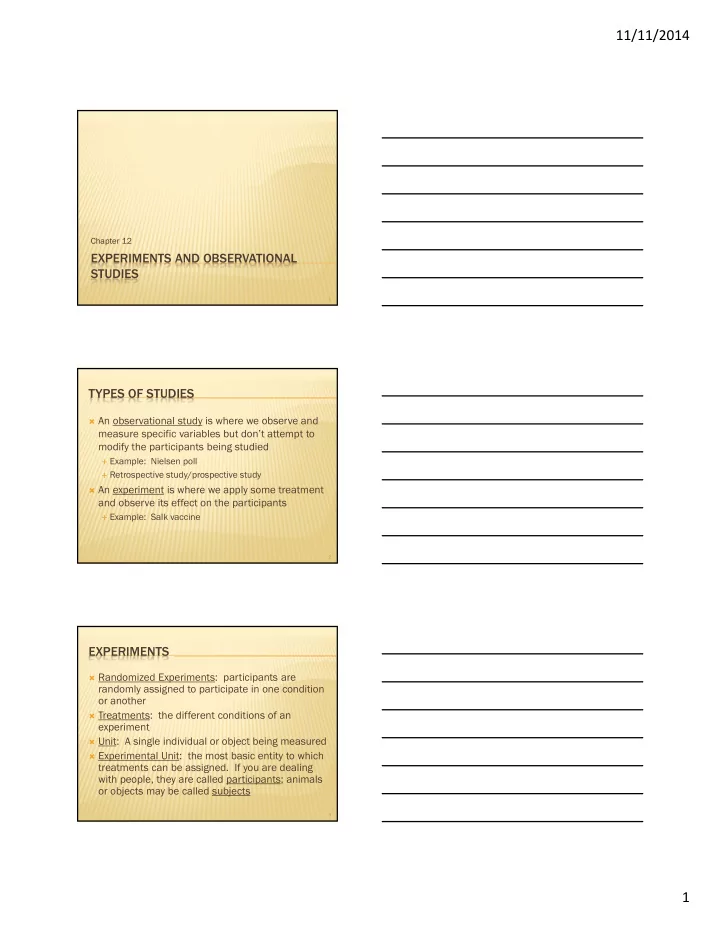

11/11/2014 Chapter 12 EXPERIMENTS AND OBSERVATIONAL STUDIES 1 TYPES OF STUDIES An observational study is where we observe and measure specific variables but don’t attempt to modify the participants being studied Example: Nielsen poll Retrospective study/prospective study An experiment is where we apply some treatment and observe its effect on the participants Example: Salk vaccine 2 EXPERIMENTS Randomized Experiments: participants are randomly assigned to participate in one condition or another Treatments: the different conditions of an experiment Unit: A single individual or object being measured Experimental Unit: the most basic entity to which treatments can be assigned. If you are dealing with people, they are called participants; animals or objects may be called subjects 3 1
11/11/2014 VARIABLES An explanatory variable (or independent variable) may explain or cause differences in a response variable (also called outcome variable or dependent variable) 4 MORE VARIABLES A confounding variable affects the response variable and is related to the explanatory variable. The effects of the two variables can’t be separated from one another. A lurking variable is a potential confounding variable not measured or considered in the study. Randomized experiments are designed to help control for confounding variables. 5 RANDOMIZING Intended to make groups approximately equal in all respects except for the explanatory variable. In this way, significant differences in the response variable can be attributed to the explanatory variable. 6 2
11/11/2014 RANDOMIZING We can Randomize the type of treatment; randomly assigning the treatments to the experimental units Prevents assignments favorable to hypothesis Protects against hidden or unknown biases Randomize the order of treatment; used if all treatments are applied to each unit Prevents inflated results due to learning effect Prevents assignments favorable to hypothesis 7 EXPERIMENTAL LANGUAGE Control group: treated identically in all respects except they don’t receive the experimental treatment. Placebo effect: occurs when an untreated subject incorrectly believes that he is receiving a treatment and reports improvement in symptoms Blinding: People involved with the study don’t know whether a subject is receiving treatment 8 BLINDING There are two main classes of individuals who can affect the outcome of the experiment: those who could influence the results (subjects, treatment administrators, technicians) those who evaluate the results (judges, treating physicians, etc.) When every individual in either one of these classes is blinded, an experiment is said to be single-blind. When everyone in both classes is blinded, the experiment is called double-blind. 9 3
11/11/2014 EXPERIMENTAL DESIGN Block-design: experimental units are divided into homogeneous groups then each treatment is randomly assigned to one or more units in each block Matched-pair design: uses either two matched individuals or the same individual to receive each of two treatments Repeated-measures design: some participants are measured repeatedly under different conditions 10 4
Recommend
More recommend